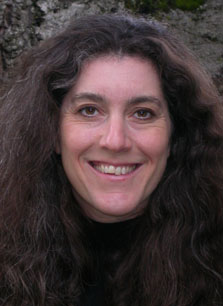Biography:Amy L. Lansky
Amy Linda Lansky (born 1955) is an United States author, computer scientist, and homeopath, noted for having written Impossible Cure: the Promise of Homeopathy.
Early life and education
Lansky grew up in Buffalo, New York. She received a B.A. from University of Rochester in 1977 and a M.S. (1979) and Ph.D. (1983) in Computer Science from Stanford University, for her thesis "Specification and analysis of concurrency".[1]
Career
In the 1980s and 1990s, Lansky worked at SRI International and at NASA Ames Research Center on artificial intelligence techniques for planning, for example for robots.[2][3] Some of her later computer science publications were from her own company, Renaissance Research.[4]
In 1998, Lansky left the field of computer science to study homeopathy. This transition was prompted by her perceived success at using homeopathy to "cure her son of Autism."[5][6]
In 2003, Lansky published Impossible Cure: The Promise of Homeopathy (ISBN:0-9727514-0-8). This book is now used as a textbook in homeopathy schools and is cited in a number of other books on homeopathy and autism.[7][8][9]
Her husband, Steven M. Rubin, Ph.D., is a computer scientist who maintains the online searchable VAERS database, MedAlerts. He has worked voluntarily for the National Vaccine Information Center since 2005.[10]
References
- ↑ Lansky, Amy Linda. "Specification and analysis of concurrency". Stanford University. https://searchworks.stanford.edu/view/319304. Retrieved 1 November 2019.
- ↑ Georgeff, Michael P., Amy L. Lansky, and Marcel J. Schoppers (1987). "Reasoning and planning in dynamic domains: An experiment with a mobile robot". SRI International. https://apps.dtic.mil/dtic/tr/fulltext/u2/a457852.pdf. Retrieved 2 November 2019.
- ↑ Friedland, Peter (1990). Fundamental Research in Artificial Intelligence at NASA. NASA Ames Research Center. p. 4. https://books.google.com/books?id=3hIDAAAAIAAJ&pg=PP4#v=onepage&q&f=false. Retrieved 2 November 2019.
- ↑ Lansky, Amy L. (1996). "Web-Based Planning for Image Processing". Proceedings of the AAAI Spring Symposium on Acquisition, Learning, and Demonstration: Automating Tasks for Users: 57–61. https://www.aaai.org/Papers/Symposia/Spring/1996/SS-96-02/SS96-02-011.pdf.
- ↑ Michael Castleman (Mar–Apr 2004). "The Strange Case of Homeopathy". Psychology Today. http://psychologytoday.com/articles/pto-20040302-000003.html.
- ↑ Daniel A. Monti and Andrew B. Newberg (2018). Integrative Psychiatry and Brain Health. Oxford University Press. p. 245. ISBN 9780190690571. https://books.google.com/books?id=qY5HDwAAQBAJ&pg=PT245#v=onepage&q&f=false. Retrieved 2 November 2019.
- ↑ Mclean, Louise (2010). Homeopathy Heals. Lulu.com. p. 64. ISBN 9780956502902. https://books.google.com/books?id=6Xa7AwAAQBAJ&pg=PA64&dq=amy+lansky#v=onepage&q=amy%20lansky&f=false. Retrieved 5 November 2019.
- ↑ Andrews, Mike (2014). Homeopathy and Autism Spectrum Disorder: A Guide for Practitioners and Families. Singing Dragon. p. 122. ISBN 9780857011282. https://books.google.com/books?id=sTekAwAAQBAJ&pg=PA122#v=onepage&q&f=false. Retrieved 7 November 2019.
- ↑ Judyth Reichenberg-Ullman, Robert Ullman, and Ian Luepker (2005). A Drug-Free Approach to Asperger Syndrome and Autism: Homeopathic Care for Exceptional Kids. Picnic Point Press. p. 29. ISBN 9780964065468. https://books.google.com/books?id=mZmeimF2HJEC&pg=PA29#v=onepage&q&f=false. Retrieved 7 November 2019.
- ↑ "Biography, Steven M. Rubin, Ph.D.". https://www.nvic.org/about/Steven-Rubin-Profile.aspx. Retrieved 10 November 2019.
External links


